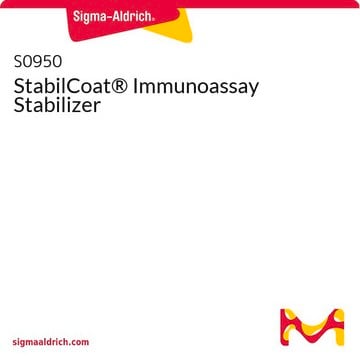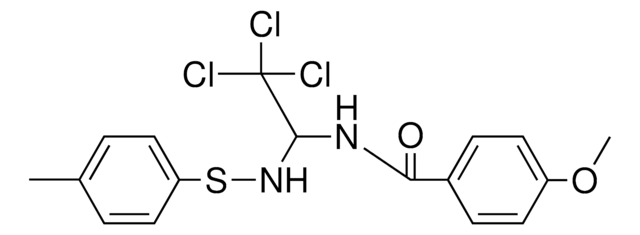S2002
Sodium azide
ReagentPlus®, ≥99.5%
Synonim(y):
Hydrazoic acid sodium salt
About This Item
Polecane produkty
pochodzenie biologiczne
synthetic (inorganic)
Poziom jakości
linia produktu
ReagentPlus®
Próba
≥99.5%
Postać
powder
warunki przechowywania
(Tightly closed. Dry. Keep in a well-ventilated place. Do not store near acids.)
metody
cell based assay: suitable
immunohistochemistry: suitable
kolor
white
mp
370-425 °C
rozpuszczalność
soluble 65 g/L at 20 °C (completely)
przydatność
suitable for chromatography
suitable for derivatization
Zastosowanie
sample preparation
ciąg SMILES
[Na]N=[N+]=[N-]
InChI
1S/N3.Na/c1-3-2;/q-1;+1
Klucz InChI
PXIPVTKHYLBLMZ-UHFFFAOYSA-N
Szukasz podobnych produktów? Odwiedź Przewodnik dotyczący porównywania produktów
Opis ogólny
Zastosowanie
Catalyst for:
- Oxidative decarboxylation
- Michael addition reactions
Reagent for synthesis of
- Blue fluorescent copolymers
- Metal phosphonates
- Arenes via aminations
Działania biochem./fizjol.
Inne uwagi
Informacje prawne
produkt podobny
zalecane rękawice chroniące przed rozpryskami
Hasło ostrzegawcze
Danger
Zwroty wskazujące rodzaj zagrożenia
Zwroty wskazujące środki ostrożności
Klasyfikacja zagrożeń
Acute Tox. 1 Dermal - Acute Tox. 2 Inhalation - Acute Tox. 2 Oral - Aquatic Acute 1 - Aquatic Chronic 1 - STOT RE 2 Oral
Organy docelowe
Brain
Zagrożenia dodatkowe
Kod klasy składowania
6.1A - Combustible acute toxic Cat. 1 and 2 / very toxic hazardous materials
Klasa zagrożenia wodnego (WGK)
WGK 2
Temperatura zapłonu (°F)
Not applicable
Temperatura zapłonu (°C)
Not applicable
Choose from one of the most recent versions:
Masz już ten produkt?
Dokumenty związane z niedawno zakupionymi produktami zostały zamieszczone w Bibliotece dokumentów.
Klienci oglądali również te produkty
Protokoły
Antibody purification protocols yield preparations containing endogenous IgG alongside specific antibodies.
Protokoły oczyszczania przeciwciał dają preparaty zawierające endogenne IgG wraz ze specyficznymi przeciwciałami.
Detailed ELISA protocols cover indirect and capture ELISA techniques, recommending products for sandwich and indirect ELISA experiments.
Szczegółowe protokoły ELISA obejmują pośrednie i wychwytujące techniki ELISA, zalecając produkty do eksperymentów kanapkowych i pośrednich ELISA.
Nasz zespół naukowców ma doświadczenie we wszystkich obszarach badań, w tym w naukach przyrodniczych, materiałoznawstwie, syntezie chemicznej, chromatografii, analityce i wielu innych dziedzinach.
Skontaktuj się z zespołem ds. pomocy technicznej









![[(3R)-3-Hydroxytetradecanoyl]-L-carnitine analytical standard](/deepweb/assets/sigmaaldrich/product/structures/179/609/9ca2d958-e24e-4810-ab06-b5ee692b43b9/640/9ca2d958-e24e-4810-ab06-b5ee692b43b9.png)